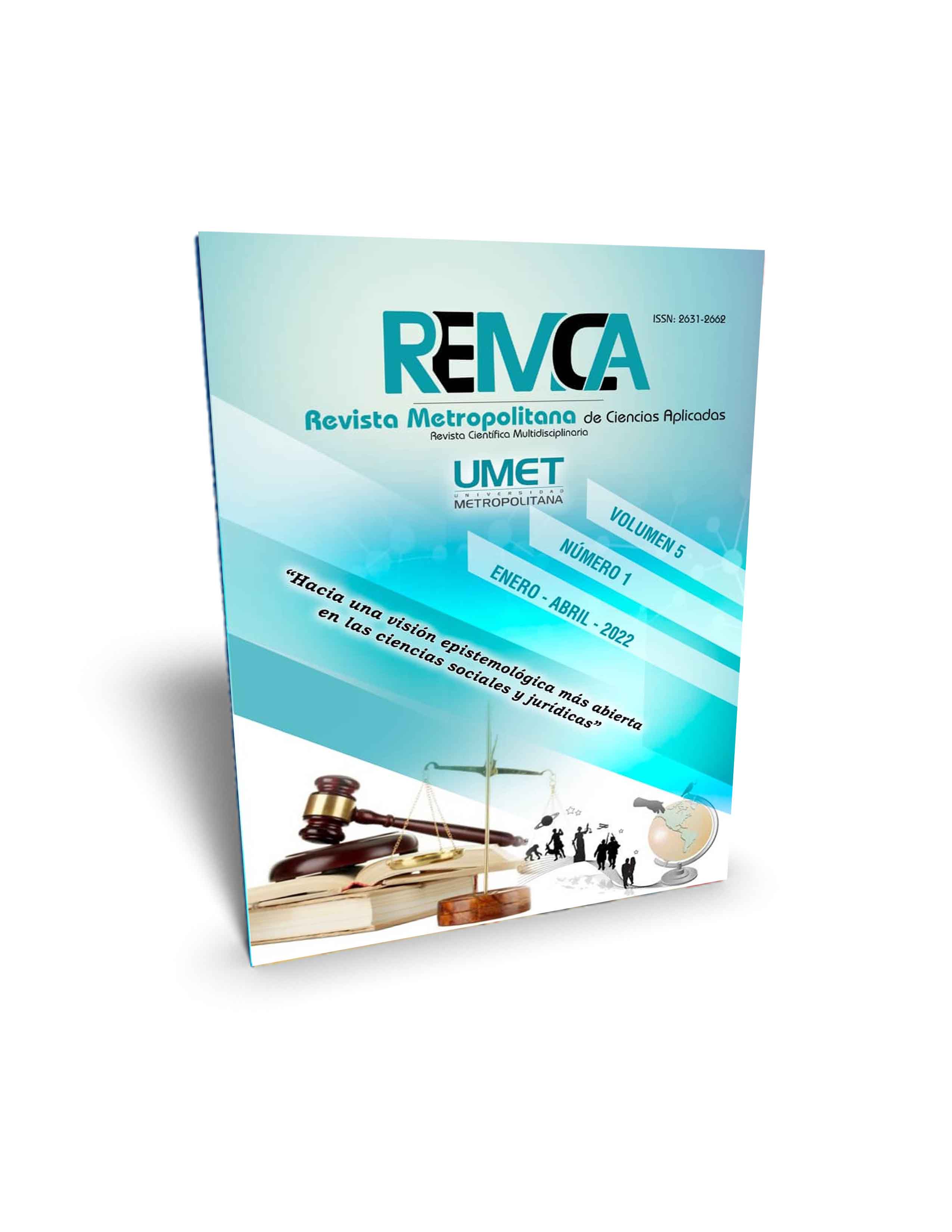Manufacturing and economic growth in Ecuador, 1990-2019: validity of Kaldor's first Law
DOI:
https://doi.org/10.62452/5g9btj68Keywords:
Kaldor, manufacturing, economic growth, ARDL, cointegrationAbstract
The economic literature, based on Kaldor's first law (1966), indicates that the manufacturing sector and the growth of an economy are positively related. Therefore, this sector stimulates economic growth. The present study aims to measure the effect of manufacturing production on economic growth, during the period 1990 to 2019, by applying Kaldor's first law (1966), to determine in the case of Ecuador, whether this relationship holds both in the short and long term. An ARDL model was used in the form of error correction, cointegration by means of the bounds test and the Granger (1969) causality test. The results show that manufacturing production has a positive and significant impact on the growth of the economy, such that a 1% increase in manufacturing increases economic growth by 0.483% and 0.695% in the short and long run, in that order. Furthermore, there is unidirectional causality between manufacturing production and economic growth. The findings support and validate Kaldor's first law (1966); therefore, the application of economic policies oriented towards this sector has a favorable impact on the growth of the economy.
Downloads
References
Agurto, A. (2018). Relación entre crecimiento económico y manufactura en Ecuador usando técnicas de cointegración. Revista Vista Económica, 4(1), 67-79.
Akaike, H. (1974). A new look at the statistical model identification. IEEE Transactions on Automatic Control, 19(6), 716-723.
Almosabbeh, I. A., & Abulkarem, A. M. (2018). The relationship between manufacturing production and economic growth in the Kingdom of Saudi Arabia. Journal of Economic Studies, 45(4), 674-690.
Arellano, M., & Bond, S. (1991). Some Tests of Specification for Panel Data: Monte Carlo Evidence and an Application to Employment Equations. Review of Economic Studies, 58(2), 277-297.
Banco Central del Ecuador.(2020a). La economía ecuatoriana decreció 12,4% en el segundo trimestre de 2020. La economía ecuatoriana decreció 12,4% en el segundo trimestre de 2020. BCE. https://www.bce.fin.ec/index.php/boletines-de-prensa-archivo/item/1383-la-economia-ecuatoriana-decrecio-12-4-en-el-segundo-trimestre-de-2020
Banco Central del Ecuador.(2020b). La economía ecuatoriana creció 0,1% en 2019. La economía ecuatoriana creció 0,1% en 2019. BCE. https://www.bce.fin.ec/index.php/boletines-de-prensa-archivo/item/1359-la-economia-ecuatoriana-crecio-01-en-2019
Banco Central del Ecuador.(2021b). Información Económica. https://www.bce.fin.ec/index.php/informacioneconomica
Banco Central del Ecuador. (2021a). En el primer trimestre de 2021, la economía ecuatoriana creció 0,7% respecto al trimestre anterior y reportó una variación interanual de -5,6% (respecto al primer trimestre de 2020. BCE. https://www.bce.fin.ec/index.php/boletines-de-prensa-archivo/item/1434-en-el-primer-trimestre-de-2021-la-economia-ecuatoriana-crecio-0-7-respecto-al-trimestre-anterior-y-reporto-una-variacion-interanual-de-5-6-respecto-al-primer-trimestre-de-2020
Bernal, C. (2010). Metodología de la Investigación: administración, economía, humanidades y ciencias sociales (Tercera Edición ed.). Colombia: PEARSON EDUCACIÓN. https://abacoenred.com/wp-content/uploads/2019/02/El-proyecto-de-investigaci%c3%b3n-F.G.-Arias-2012-pdf.pdf
Granger, C. (1969). Investigating causal relations by econometric models and cross-spectral methods. Econométrica, 37(3), 424-438.
Halkos, G., Moll De Alba, J., & Todorov, V. (2021). Analyzing manufacturing sector and selected development challenges: A panel data analysis. Energy, 235, 1-11.
Kaldor, N. (1966). Causes of the Slow Rate of Economic Growth of the United Kingdom. An Inaugural Lecture. London: Cambridge University Press.
Keho, Y. (2018). Manufacturing and Economic Growth in ECOWAS Countries: A Test of Kaldor’s First Law. Modern Economy, 9, 897-906.
Kwiatkowski, D., Phillips, P. C., Schmidt, P., & Shin, Y. (1992). Testing the null hypothesis of stationarity against the alternative of a unit root: How sure are we that economic time series have a unit root? Journal of Econometrics, 54(1-3), 159-178.
Pesaran, M. H., & Shin, Y. (1999). An autoregressive distributed lag modelling approach to cointegration analysis. Chapter 11 in Econometrics and Economic Theory in the 20th Century: The Ragnar Frisch Centennial, Strom S (ed.). Cambridge University Press: Cambridge.
Pesaran, M. H., Shin, Y., & Smith, R. (2001). Bounds testing approaches to the analysis of level relationships. Journal of Applied Econometrics, 16(3),289–326.
Sallam, M. (2021). The role of the manufacturing sector in promoting economic growth in the Saudi economy: a cointegration and VECM approach. Journal of Asian Finance, Economics and Business, 8(7), 21-30.
Su, D., & Yao, Y. (2017). Manufacturing as the key engine of economic growth for middle-income economies. Journal of the Asia Pacific Economy, 22(1), 47-70.
Szirmai, A., & Verspagen, B. (2015). Manufacturing and economic growth in developing countries, 1950–2005. Structural Change and Economic Dynamics, 34, 46-59.
Tunali, C. B., & Boru, F. (2019). The Causality Effects of Manufacturing Sector on Some Macroeconomic Variables in Turkey. Procedia Computer Science, 158, 1109-1113.
Verdoorn, P. J. (1949). Fattori che regolano lo sviluppo della produttivita del lavoro. (Vol. 1). L’industria.
Downloads
Published
Issue
Section
License
Copyright (c) 2022 Katherin Paulette Zapata Chin, Wilman John Nieves Nieves, Andrea del Cisne Vega Granda (Autor/a)

This work is licensed under a Creative Commons Attribution-NonCommercial-ShareAlike 4.0 International License.
Authors who publish in Revista Metropolitana de Ciencias Aplicadas (REMCA), agree to the following terms:
1. Copyright
Authors retain unrestricted copyright to their work. Authors grant the journal the right of first publication. To this end, they assign the journal non-exclusive exploitation rights (reproduction, distribution, public communication, and transformation). Authors may enter into additional agreements for the non-exclusive distribution of the version of the work published in the journal, provided that acknowledgment of its initial publication in this journal is given.
© The authors.
2. License
The articles are published in the journal under the Creative Commons Attribution-NonCommercial-ShareAlike 4.0 International License (CC BY-NC-SA 4.0). The terms can be found at: https://creativecommons.org/licenses/by-nc-sa/4.0/deed.en
This license allows:
- Sharing: Copying and redistributing the material in any medium or format.
- Adapting: Remixing, transforming, and building upon the material.
Under the following terms:
- Attribution: You must give appropriate credit, provide a link to the license, and indicate if any changes were made. You may do this in any reasonable manner, but not in any way that suggests the licensor endorses or sponsors your use.
- NonCommercial: You may not use the material for commercial purposes.
- ShareAlike: If you remix, transform, or build upon the material, you must distribute your creation under the same license as the original work.
There are no additional restrictions. You may not apply legal terms or technological measures that legally restrict others from doing anything the license permits.




